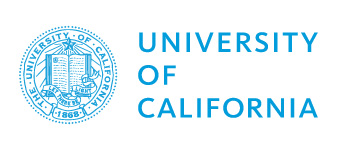Generative AI: Revolutionizing Content Creation with Artificial Intelligence
Generative AI (GenAI) is rapidly transforming the landscape of content creation, pushing the boundaries of what artificial intelligence can achieve. This cutting-edge technology has the power to generate a wide array of content, from text and images to videos and music, opening up new possibilities across various industries. In this comprehensive exploration, we’ll delve into the intricacies of generative AI, its applications, and its potential impact on the future of creative processes.
Understanding Generative AI
Generative AI is a subset of artificial intelligence that focuses on creating new content rather than simply analyzing or categorizing existing data. By leveraging advanced machine learning algorithms and neural networks, generative AI systems can produce original outputs that closely mimic human-created content. This technology has made significant strides in recent years, thanks to improvements in computational power and the availability of vast datasets for training.
Key Components of Generative AI
- Neural Networks: The backbone of generative AI systems
- Machine Learning Algorithms: Enable continuous improvement and adaptation
- Large Training Datasets: Provide the foundation for content generation
- Natural Language Processing (NLP): Crucial for text-based generative AI
- Computer Vision: Essential for image and video generation
Applications of Generative AI
The versatility of generative AI has led to its adoption across numerous fields, revolutionizing content creation processes in ways previously thought impossible. Let’s explore some of the most prominent applications:
1. Text Generation
Generative AI excels in creating written content, from short-form articles to long-form narratives. This technology can generate:
- News articles and reports
- Creative fiction and poetry
- Marketing copy and product descriptions
- Technical documentation and user manuals
For instance, GPT-3 (Generative Pre-trained Transformer 3) has demonstrated remarkable capabilities in producing human-like text across various genres and styles.
2. Image Creation
Generative AI has made significant strides in visual content creation, enabling the production of:
- Photorealistic images
- Digital artwork and illustrations
- Product visualizations
- Visual effects for film and television
Tools like DALL-E and Midjourney have garnered attention for their ability to generate stunning images from textual descriptions, showcasing the potential of generative AI in visual arts.
3. Video Production
Generative AI is also making waves in video creation, offering capabilities such as:
- Automated video editing and compilation
- Visual effects generation
- Character animation
- Video upscaling and restoration
These advancements are streamlining video production processes and opening up new creative possibilities for filmmakers and content creators.
4. Music Composition
In the realm of audio, generative AI is pushing the boundaries of music creation:
- Original music composition
- Sound design for films and games
- Personalized playlist generation
- Music remixing and mashups
AI-powered tools can now compose original pieces in various genres, offering new avenues for musical expression and experimentation.
The Impact of Generative AI on Industries
The widespread adoption of generative AI is reshaping numerous industries, streamlining processes, and unlocking new creative potentials:
1. Media and Entertainment
Generative AI is revolutionizing content production in the media industry, enabling:
- Rapid creation of news articles and reports
- Personalized content recommendations
- Automated video editing and post-production
- Virtual character creation for games and animations
2. Marketing and Advertising
In the marketing realm, generative AI is transforming campaign creation and execution:
- Automated content generation for social media
- Personalized ad copy and visuals
- Dynamic A/B testing of marketing materials
- Chatbots and virtual assistants for customer engagement
3. E-commerce and Retail
Generative AI is enhancing the online shopping experience through:
- Virtual try-on technologies
- Personalized product recommendations
- Automated product descriptions and reviews
- Visual search capabilities
4. Education and Training
In the education sector, generative AI is facilitating:
- Personalized learning materials
- Automated grading and feedback systems
- Virtual tutors and teaching assistants
- Simulation-based training environments
Challenges and Ethical Considerations
While generative AI offers immense potential, it also raises important challenges and ethical concerns:
- Copyright and Intellectual Property: Questions around ownership of AI-generated content
- Job Displacement: Concerns about AI replacing human creators in certain roles
- Misinformation and Deep Fakes: The potential for AI to generate convincing false content
- Bias and Fairness: Ensuring AI systems don’t perpetuate or amplify existing biases
- Privacy Concerns: Safeguarding personal data used in training AI models
The Future of Generative AI
As generative AI continues to evolve, we can expect to see:
- Increased Integration: More seamless incorporation of AI into creative workflows
- Enhanced Personalization: AI-generated content tailored to individual preferences
- Cross-Modal Generation: AI systems capable of creating content across multiple formats simultaneously
- Improved Ethical Frameworks: Development of guidelines and regulations for responsible AI use
- Collaborative AI: Systems that work alongside human creators, enhancing rather than replacing human creativity
Conclusion
Generative AI represents a paradigm shift in content creation, offering unprecedented capabilities in producing text, images, videos, and music. As this technology continues to advance, it promises to revolutionize creative processes across industries, opening up new possibilities for innovation and expression. However, it’s crucial to approach this powerful tool with a balanced perspective, addressing the ethical challenges it presents while harnessing its potential to enhance human creativity and productivity. The future of generative AI is bright, and its impact on our world is only beginning to unfold.






















